When to dig up lilies and how to store them?
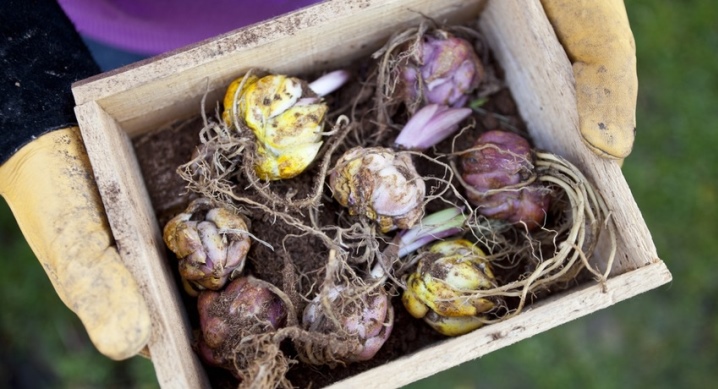
Lily was the emblem of the French kings, the flower inspired the work of poets and artists, its name served as the choice of a female name. Lily has more than 80 species, some of them, as a rule, are the most beautiful, are quite capricious and taking care of them requires some knowledge and patience.
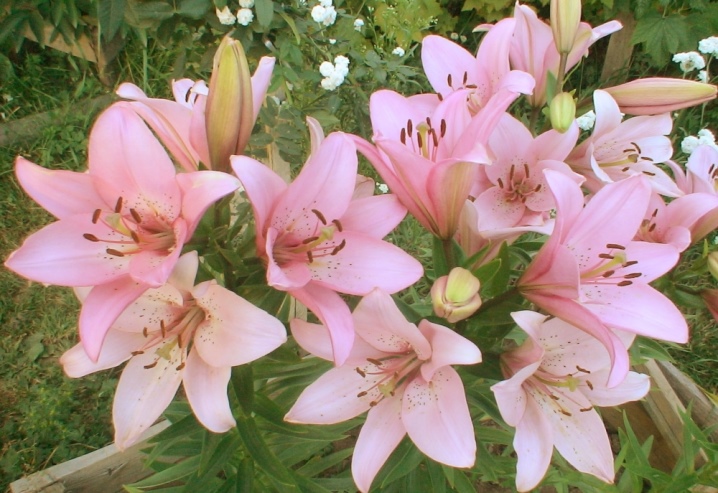
Do the bulbs need to be dug up?
Lily is a perennial bulbous herb that can grow in one place without transplanting for up to 6 years or more. The flower is propagated by separated daughter bulbs in late August or early September. Reproduction by baby bulbs and scales can be done at any time of the year. The following are the main factors that lead to digging up lilies every year:
- type of plant;
- climatic conditions;
- target orientation.
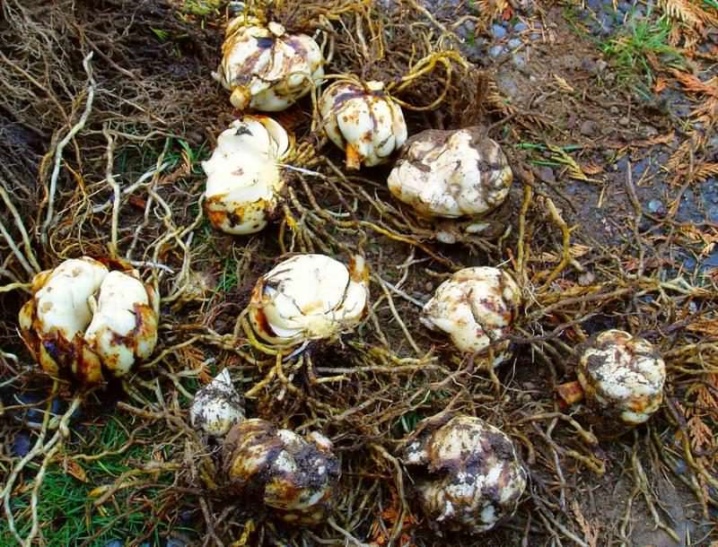
Each type of flower has its own characteristics. In the twentieth century, new species of frost-resistant lilies were introduced to the population, including hybrid plant varieties that opened up new standards of vitality and disease resistance. The most hardy and unpretentious are such types of lily hybrids as:
- asian;
- curly;
- tubular.
Important! The bulbs of these varieties are excellently stored in the ground under snow in winter when using conventional mulching.
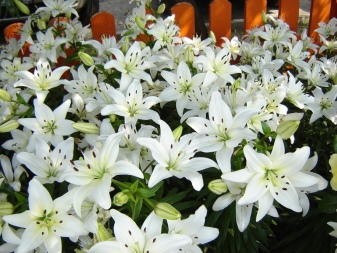
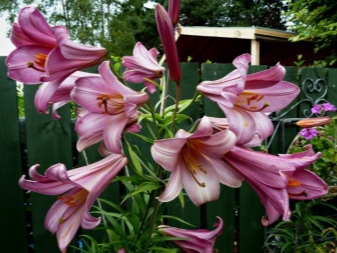
Some types of lilies, including exotic ones, are not very hardy, but because of their beauty, many gardeners would like to see such flowers on their plots. Breeding lilies brought from southern countries to places with cold climates often gives a positive result, provided that the bulbs of these plant varieties must be dug up every year for the winter. These types include the following:
- white lilies;
- American hybrids;
- long-flowered hybrids;
- oriental hybrids.
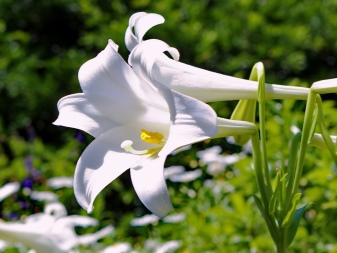
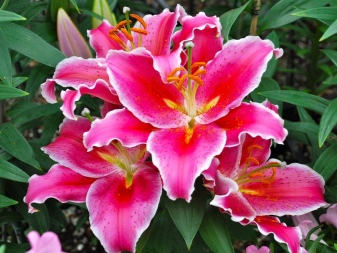
Important! Timely measures taken to preserve the bulbs in winter will make it possible to avoid the risk of losing rare specimens.
Each climatic zone has its own flowers, which over the years have adapted to local weather conditions, this is called natural selection. When buying a lily of a new variety, you need to find out where the flower comes from. The right information will help the grower use the right methods for growing it. When growing flowers for sale, lilies are dug up every year to get new copies as quickly as possible. In such cases, they often resort to an artificial method of obtaining a large number of offspring - the bottom of the bulb is cut out or deep cuts are made on it, then a lot of children are formed.
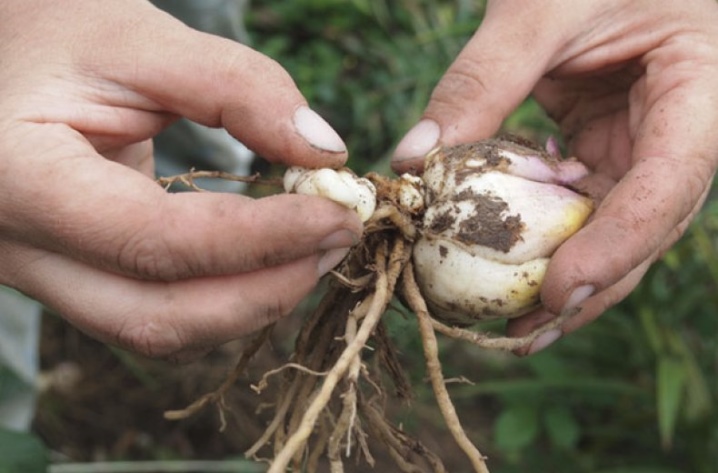
Timing
After flowering lilies, the stems of the plants are not cut, but carry out the following actions with them:
- remove seed pods (seed propagation is extremely rare by gardeners, since there are simpler and more effective methods);
- pinch the formed ovaries on the stems, since the buds will no longer have time to form by the end of summer and will unnecessarily deplete the bulb;
- leave the stems to dry naturally.
Important! At the end of the season, dried stems of plants are cut at the root. The full ripening of the bulb after flowering takes 1–1.5 months.
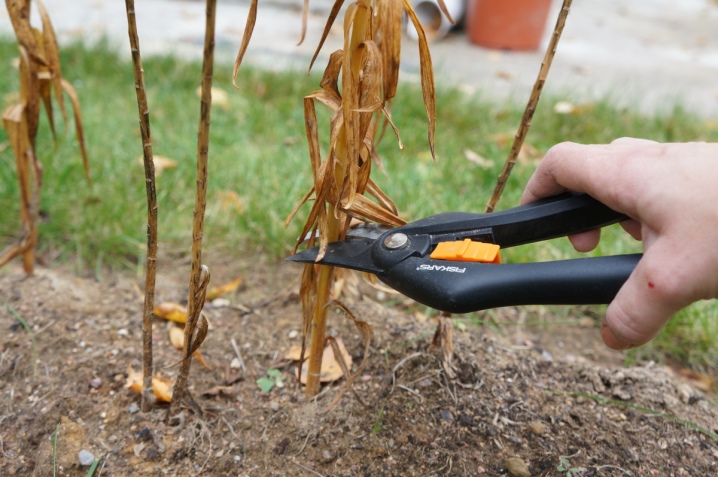
For winter storage, bulbs of heat-loving varieties of lilies are dug up in the fall. The digging time is determined by the state of the aboveground part of the plant, the stem at the base should be dry, which means that the bulb is fully ripe.For different varieties of plants, this moment occurs at different times, digging out lilies begins on August 15 and ends before September 10. Lilies imported from southern countries do not need to be dug up for the winter in areas with a temperate climate, for example, in the Moscow region, but in this case it is necessary to take care of their warming for the winter. Various materials at hand are used to cover the flower garden, namely:
- construction waste, sawdust;
- hay, straw;
- dry leaves;
- dried tops of vegetables.
Important! Heaters that can be blown away by the wind must be pressed down from above with boards or roofing felt. With the onset of winter, the area with flowers is covered with a thick layer of snow over the shelter.
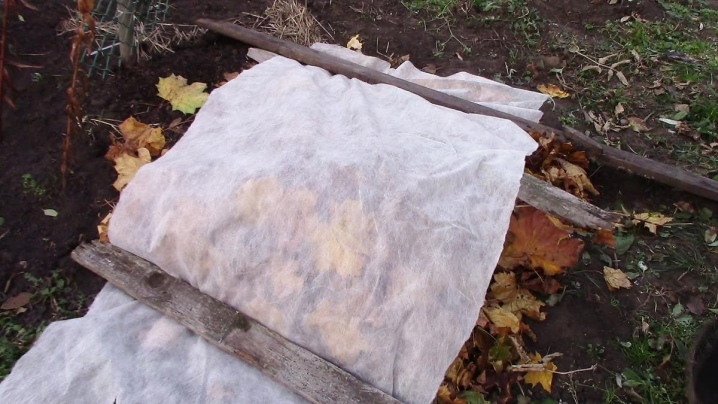
Lilies can remain in the soil for years, blooming every year. Plants are dug up only if excessive crowding begins to affect the quality of the flowers. Daughter bulbs with roots and stems are separated from the mother bulb, excess shoots are removed, and the desired specimens are seated again at a distance of 30 centimeters from each other. In order for young shoots to take root before frost, heat-loving lilies are divided and planted in mid-August, and frost-resistant plants - in early September.
The most exotic in appearance oriental hybrid lilies do not differ in great endurance and good health., therefore, you should not leave them outdoors for the winter in order to preserve expensive and rare specimens in the collection.
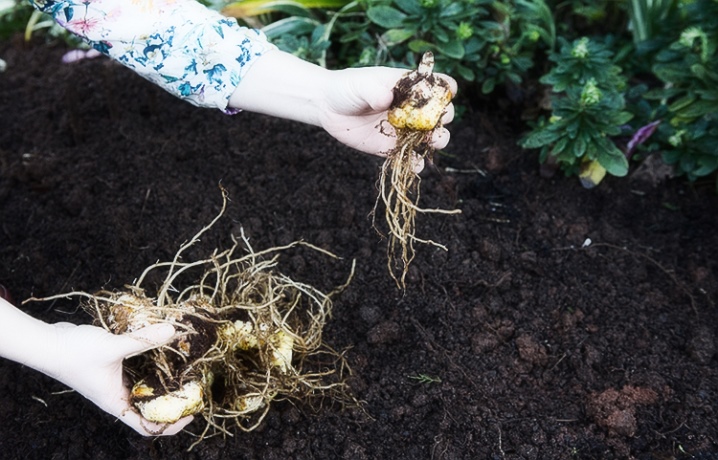
Step-by-step instruction
The following step-by-step instructions are suggested. to dig up lily bulbs:
- prepare the site (free from leaves, small debris using a light rake); in order not to confuse the area with lilies, which remain to winter in the open field, after flowering, you need to designate it with a sign with a note;
- cut dried lily stems at the root with garden shears;
- dig up the onion with a pitchfork, carefully remove the lumps of soil from it;
- cut the roots to 5-7 centimeters, inspect the bulb for rotten and dried out areas, remove them with a sharp knife;
- immerse the dug specimens in a disinfecting solution (fungicide, potassium permanganate) for 10 minutes;
- remove the bulbs from the solution, dry thoroughly on grates in a ventilated room inaccessible to sunlight (canopy, woodshed);
- after drying, break off the babies from the mother's bulb, place them in a container with sand;
- further (based on the purpose of destination), the divided onion with the children is either planted back into the soil, or sent for winter storage.

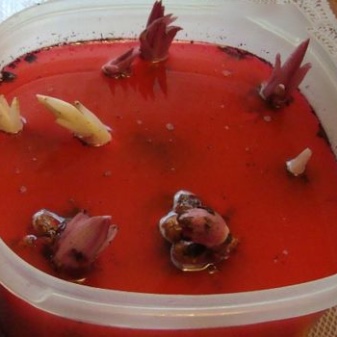
Storage rules
Subject to certain rules, lily bulbs can be stored at home in winter. Bulbs of non-frost-resistant plants are also determined for storage in cases where it was not possible to plant them in the fall immediately after division. In winter, specimens should be stored in dark, cool places with temperatures ranging from 0 to 5 degrees Celsius. Let's consider such places in more detail.
- Basement. Storing lily bulbs in the basement is allowed if there is good air ventilation and there is no high humidity, otherwise the planting material will be destroyed by mold. To keep the bulbs in the basement, it is better to use products that absorb moisture well, such as sawdust, wood shavings.
- Garage. This is an ideal place for storing planting material in boxes of sand or peat, provided the room is heated. When the bulbs are hibernated in a cold garage, there is a high probability of freezing. The conditions for storing bulbs in loggias are the same as in garages.
- Warm loggia. Baby bulbs can be stored until spring in dry, ventilated rooms, even at room temperature, in boxes with a lattice bottom or in gauze bags.
- Fridge. Despite the fact that storing the planting in the refrigerator is the most attractive option of all of the above, it is worth consideringthat in different refrigerators there is a different degree of humidity and the bulbs should be stored in them with great care, sprinkling them with wood shavings that absorb excess moisture well.
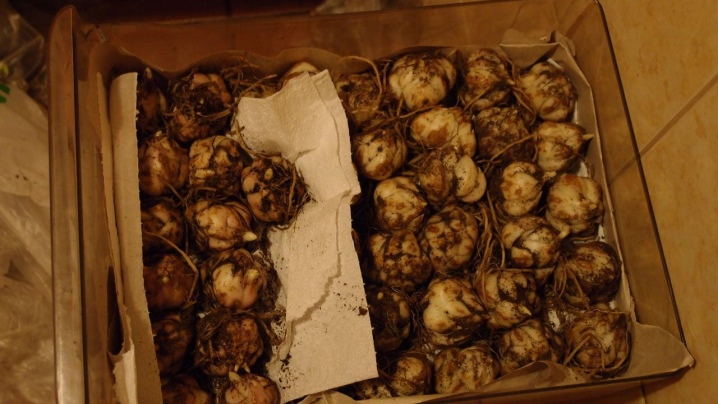
For storage of lily bulbs, see the next video.







































































































The comment was sent successfully.